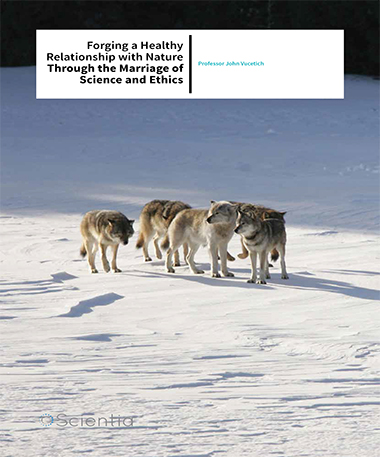Professor John Vucetich – Forging A Healthy Relationship With Nature Through The Marriage Of Science And Ethics
Professor John Vucetich of Michigan Technological University spends much of his research life studying wolves in Isle Royale and Yellowstone National Parks. He is also deeply involved with carnivore conservation throughout North America – work that depends on the successful synthesis of scientific and ethical knowledge.
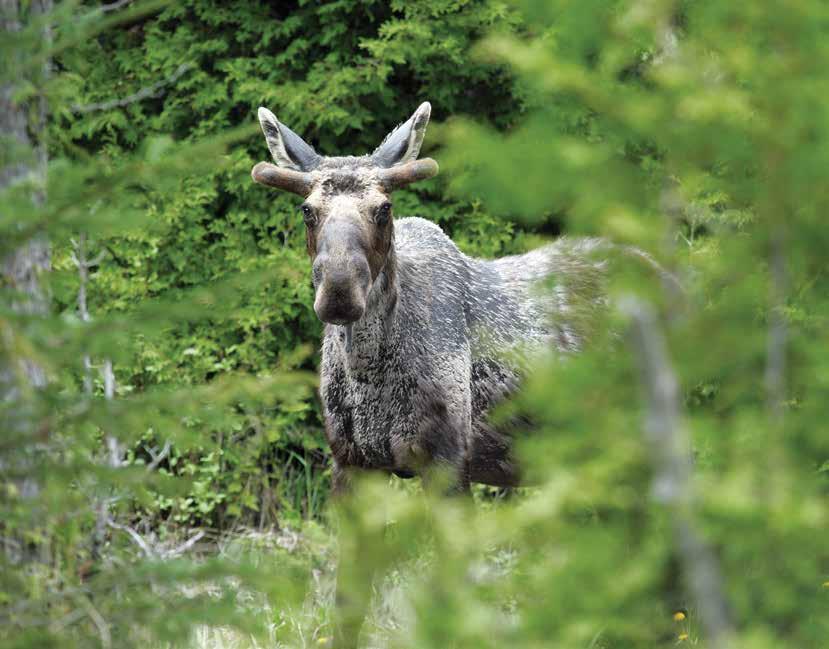
The Isle Royale Project – a Source of Wonder
Isle Royale is a remote island protected by the frigid waters of Lake Superior, the largest freshwater lake in the world. The island has been inhabited by a single species of large predator, the wolf, and their sole prey, the moose. That predator-prey system is globally distinct for being protected from hunting and persecution and for being supported by a forest protected from logging. The wolf and moose populations have been studied intensively for nearly six decades, representing the longest running study of any predator-prey system in the world. Professor Vucetich has been leading that project, with Professor Rolf Peterson, since 2000. Much of Vucetich’s work has focussed on developing knowledge about predation ecology and population genetics.
A keystone for understanding predation, on the whole, is to understand the dynamics that underlie kill rate – the frequency at which predators kill their prey. Ever since the predator-prey equations of Lotka and Volterra, ecologists had believed that kill rate depends essentially on the number of prey. The rationale is robustly simple – predators kill more frequently when their prey are more abundant because they are easier to find. The idea also seemed to be supported by significant empirical evidence. Other factors – such as weather and the health of individuals in the prey population – were certainly important, but the essence is prey abundance. An alternative idea of heretical proportion was introduced in the 1990s: kill rate might depend not so much on prey abundance, but more so on the ratio of prey to predator. The idea was tough to accept for several critical theoretical reasons (for example, if kill rates are ratio dependent, then predators are less likely, in theory, to create trophic cascades). Controversy was further fuelled by a relative dearth of empirical evidence capable of evaluating ratio dependency. Vucetich showed that kill rates by Isle Royale wolves are unquestionably better explained by the ratio of predator to prey. That demonstration paved the way to ratio-dependency becoming a conventional idea.
Vucetich also used observations of Isle Royale wolves to resolve another kill rate mystery. Behavioural ecologists studying social carnivores – wolves, lions, African wild dogs, and the like – had long been perplexed by the tendency for the per capita kill rate to decline as group size increases. That pattern ought to lead to the dissolution of larger social groups, because predators would tend to do better foraging on their own, or perhaps with just one partner. Vucetich demonstrated in a 2004 Animal Behaviour article and later summarised:
‘Wolves living in larger packs each get more food because they lose less food to scavenging ravens. They do this by eating a moose so quickly that ravens have less time to scavenge. The details are fantastically complicated, and while wolves in larger packs must share food among their brothers and sisters, parents and offspring, that sharing is not so costly as losing food to scavengers. So ravens have something to do with explaining why wolves live such intensely social lives—a trait that is otherwise rare among carnivores. What an astonishing connection.’
Observations from Isle Royale by Vucetich’s team have also deepened our understanding of a potentially valuable conservation tool – genetic rescue, which occurs when the introduction of one or more unrelated individuals into an inbred population mitigates the detrimental effects of inbreeding. In 1997, a wolf immigrated to Isle Royale by crossing an ice bridge that formed during an unusually cold winter. The severely inbred condition of Isle Royale wolves and the beneficial effect of the immigrant were revealed by genetic analyses demonstrating that, within three generations, more than half of the population’s ancestry was attributable to the immigrant. But the demographic benefits of that powerful genetic rescue were muted by the moose population (i.e., the wolves’ food supply) having collapsed in the previous year due to another severe winter. One of the general lessons of this genetic rescue event is that in a stressful environment, genetic rescue can be beneficial even if it does not result in a clear demographic response.
That genetic rescue event also reversed a decades’ long belief that the wolf population had been genetically isolated and free of inbreeding depression. Those observations also revealed an unexpected adverse impact of climate warming. In past decades, occasional gene flow had been facilitated by ice bridges that formed during most winters. With climate warming, ice bridges are now rare and will soon be a thing of the past. By 2016, inbreeding had brought the wolf population to the brink of extinction and the moose population was showing early signs of unsustainable growth. Vucetich highlighted, in a 2016 essay in Natural History, how the wolves of Isle Royale represent a major, unresolved policy concern for knowing when it is right to mitigate the adverse effects of climate change in protected areas.
‘I wanted to contribute to a better relationship between humans and nature. I naively thought the need for more scientific knowledge was the limiting factor in making for a better relationship.’
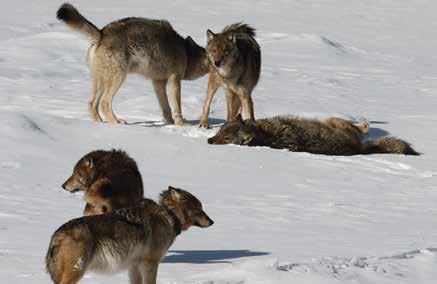
Complexities revealed only through longterm research
Understanding the extent to which predators affect prey and subsequently shape ecological communities has been one of the great, perennial motivations in ecology. With respect to those dynamics, Isle Royale has exhibited four distinct phases over the past six decades. During the 1960s and 1970s, wolf predation was high, suppressing moose abundance and allowing vigorous growth of the forest. To have such a clear impression after two decades of observation would lend considerable confidence to one’s perceived understanding, especially given that few ecosystems are studied as intensively or for as long.
What can undermine such confidence is continued observation. That two-decade pattern abruptly reversed itself during the 1980s. Wolf predation plummeted, moose erupted and forest growth was impaired. That reversal was reported in a 1994 Science article and is considered the first trophic cascade to be documented in a terrestrial ecosystem.
Without warning, the pattern quickly switched again during the mid-1990s. Moose abundance collapsed, wolf predation was reignited, and the forest rebounded in a way that had not been experienced for nearly a century. Another reversal occurred in 2009. Again, wolf predation plummeted, moose populations erupted, and the forest began to endure another round of increased browsing.
These dynamics are not adequately explained by predator-prey cycles of the kind that Lotka and Volterra described almost a century ago. Lotka-Volterra dynamics are, for example, characterised by an impressively consistent tempo – like the inviolable 10-year cycle of lynx and hare. On Isle Royale, the tempo is irregular and the abrupt shifts are sparked by inherently unpredictable events. The first switch from high to low predation was triggered by a disease that struck the wolf population in the early 1980s (the disease, canine parvo virus, was inadvertently brought to the island by humans). The second switch from low to high predation was triggered by the coincidence of rare events in 1996 and 1997 – a catastrophically severe winter whose affect was amplified by extremely high moose abundance and a wolf population reinvigorated by genetic rescue, which arose from the idiosyncratic coincidence of a winter cold enough to produce an ice bridge and an individual wolf whose dispersal was fortuitously and impressively successful. The most recent abrupt shift in dynamics occurred in 2009 when the benefits of genetic rescue unexpectedly evaporated.
Predicting the future dynamics of an ecosystem from the laws of nature has long been a unifying purpose of ecological science. Vucetich says, ‘Regularities that could be called laws of nature are certainly important for understanding ecosystems, but Isle Royale suggests a different view. Dynamics on Isle Royale have been better explained by inherently unpredictable historical contingencies, events such as extreme weather or novel diseases, than by any regular patterns.’
Vucetich also believes that admitting the dominant role of historical contingency goes well beyond the conventional understanding of environmental stochasticity. Vucetich concludes that ‘acknowledging the importance of inherently unpredictable historical contingencies on ecosystems would profoundly affect our approach to natural resource management, which depends heavily on the faith we put in our capacity to predict the future consequences of our actions toward nature.’
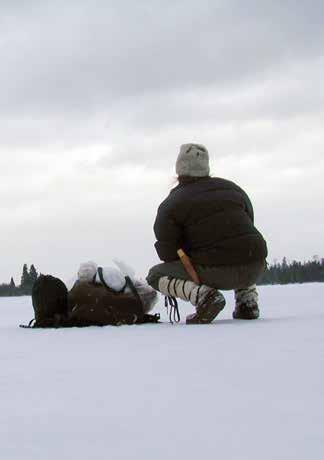 Environmental science and environmental ethics
Environmental science and environmental ethics
The path that led Vucetich to study wolves on Isle Royale was unplanned, fortuitous, and depended critically on support from mentors – especially Professor Rolf Peterson, who began leading the Isle Royale wolf-moose project in 1970, a year before Vucetich was born. But motivation to travel down that path, Vucetich recalls, ‘began as a young boy. I enjoyed the outdoors and had great outdoor experiences in Boy Scouts. At first, my interest was little more than satisfying a sense of outdoor adventure and later a sense of intellectual adventure. Over time my interest changed – I wanted to contribute to a better relationship between humans and nature. I naively thought the need for more scientific knowledge was the limiting factor in making for a better relationship. I eventually discovered that I had an independent interest in philosophy and environmental ethics.’
That interest in philosophy exposed Vucetich to some of the essential thoughts of western knowledge. There was the is/ought problem, developed by 18th century philosopher David Hume, which posits that understanding what counts as a right relationship with others (including nature) cannot be determined from facts alone. And, there were the complicating thoughts of the great American Philosopher, Hillary Putnam, who demonstrated that distinction between facts and values is quite a bit blurrier than is typically supposed. Vucetich says, ‘Over time, I came to believe that the best I could do to help bring about a better relationship with nature is to marry the insights of environmental science and environmental philosophy.’
From wonderment to sustainability
Vucetich believes a critical and undervalued role of science is to inspire a sense of wonder for nature because, as he has written:
‘Think about knowledge that makes you go “Wow!” Wow, that’s so beautifully complicated . . . magnificently nuanced . . . astonishingly connected… It would seem awfully difficult to intentionally abuse nature while being held by its wonder. How can you do anything but care for nature, while [genuinely] astonished by its beauty, complexity, and interrelatedness?’
But Vucetich’s argument goes further. While some argue that scientists should restrict themselves to mere custodians of fact and refrain from any further advocacy for the environment, Vucetich sees it differently. He and long-time collaborator, ethicist Michael Paul Nelson of Oregon State University, argued in a 2009 Conservation Biology article that scientists are citizens before they are scientists. As such, and in the spirit of playwright Henrik Ibsen, citizen-scientists have an obligation to work for that which they can argue – honestly and transparently – is right.
Vucetich has also explained, in a 2015 Conservation Biology article, how nature is valuable not only for human well-being, but that nature also possesses intrinsic value. That is, nature ‘deserves to be treated with… concern for its welfare [and] in a just manner.’ Acknowledging nature’s intrinsic value has a profound impact on our understanding of sustainability. When we fail to acknowledge nature’s intrinsic value sustainability reduces to it vulgar form, as Vucetich and Nelson called it in a 2009 Bioscience article. That is, sustainability is no more than ‘exploiting nature as much as we like without infringing on our future capacity to do so.’ In sharpest possible relief, acknowledging nature’s intrinsic value lifts sustainability to its virtuous form, where we ‘exploit nature as little as necessary to maintain a healthy, meaningful life.’
The future, it seems, will depend critically on our collective ability to operate wisely at the interface between science and ethics.
Meet the researcher
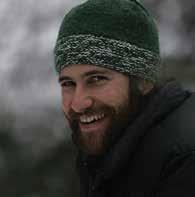
Professor John Vucetich
School of Forest Resources and Environmental Science
Michigan Technological University
Houghton, USA
Professor John Vucetich is from the School of Forest Resources and Environmental Science at Michigan Technological University. After graduating from Michigan Technological University with a BSc in Biological Sciences and a PhD in Forest Sciences, he took a Research Assistant Professorship at the same institution and became an Associate Professor in 2011. He has authored or co-authored over 75 peer-reviewed articles that have been collectively cited more than 3400 times. His scientific research has led to valuable insight pertaining to predation and population genetics. Professor Vucetich has also distinguished himself as an expert in conservation ethics. That expertise is comprised of equal parts scholarly rigor and real-world conservation experience. His writings on ethics have appeared in scholarly venues, such as Conservation Biology, Bioscience, and Conservation Letters and popular outlets such as The New York Times, Natural History, Huffington Post, and The Ecologist. Writing on a wide range of topics – trophy hunting, wilderness, endangered species, sustainability, animal welfare, and climate change mitigation – Professor Vucetich’s work has been acknowledged by its influence on policy and scholarship. He has been involved with numerous documentaries, art exhibits and museum exhibits which detail the wolves and moose of Isle Royale. He has been fictionalised as the main character in a novel (Winter Study by Nevada Barr), which made the New York Best-Sellers list at #10 for hard-cover fiction.
CONTACT
T: (+1) 906 487-1711
KEY COLLABORATORS
Rolf O. Peterson, Michigan Technological University
Michael Paul Nelson, Oregon State University
Douglas W. Smith, Yellowstone National Park
Jeremy T. Bruskotter, Ohio State University
FUNDING
U.S. National Science Foundation
U.S. National Park Service
REFERENCES
JR Adams, LM Vucetich, PW Hedrick, RO Peterson, JA Vucetich, Genomic sweep and potential genetic rescue during limiting environmental conditions in an isolated wolf population, Proc. R. Soc. B, 2011, 278, 3336–3344.
RO Peterson, JA Vucetich, JM Bump, DW Smith, Trophic cascades in a multicausal world: Isle Royale and Yellowstone, Annual Review of Ecology, Evolution, and Systematics, 2014, 45, 325–345.
JA Vucetich, JT Bruskotter, MP Nelson, Evaluating whether nature’s intrinsic value is an axiom of or anathema to conservation, Conservation Biology, 2015, 29, 321–332.
JA Vucetich, M Hebblewhite, DW Smith, RO Peterson, Predicting prey population dynamics from kill rate, predation rate and predator–prey ratios in three wolf-ungulate systems, Journal of Animal Ecology, 2011, 80, 1236–1245.
JA Vucetich, MP Nelson, Sustainability: virtuous or vulgar?, BioScience, 2010, 60, 539–544.

